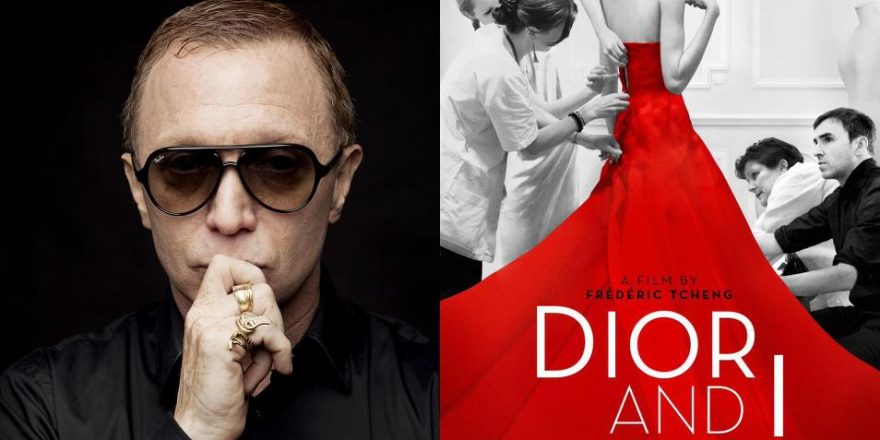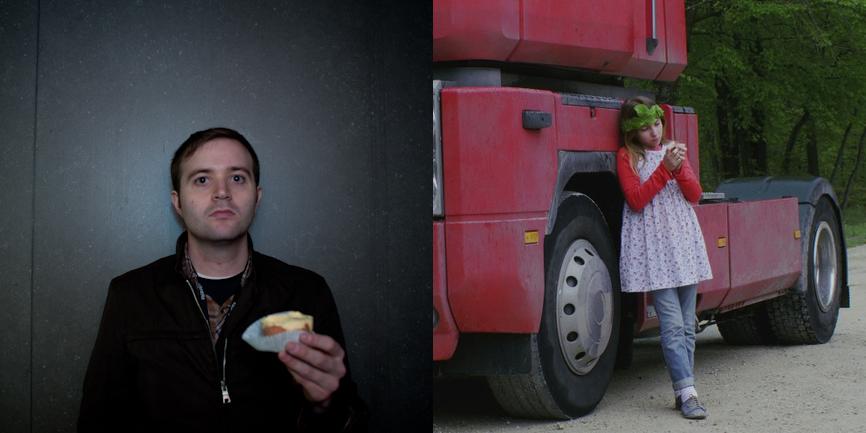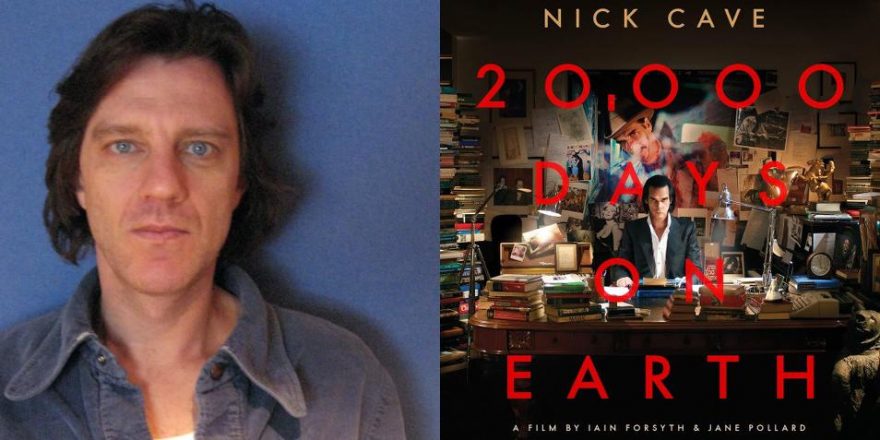What to make of Dior and I, the latest fashion documentary by French-born filmmaker Frédéric Tcheng? His previous film as (co-)director, Diana Vreeland: The Eye Has to Travel, may have been a zippy romp through the former Vogue editor’s storied, indefatigable life, but it also managed to create a poignant portrait of an emotionally remote woman (outside of her passion for organza and snoods) whose wild imagination crowded out her own family and other more quotidian aspects of life. By taking on Raf Simons, the latest creative director of legendary fashion house Dior, Tcheng is faced with another emotionally hidden subject (except when it comes to his own creations), but never quite gains access to anything personal or private. The result is a somewhat insider-ish look at the fashion industry itself and the creative process it entails, but without much drama beyond the pressure of Simons creating in two months his debut haute couture line for Dior, which apparently would usually have taken at least twice that time. There are minor skirmishes between the sometimes-frosty Simons and the long-employed, workaday couture dressmakers, with negotiations smoothed over by his openly gay sidekick, but ultimately Dior and I comes across almost like a promotional film that might have been made in-house.
It starts out promisingly, more in the style of the Vreeland documentary, utilizing black-and-white archival footage of Dior himself, accompanied by first-person narration taken from the master’s memoirs, read by writer Omar Berrada. “The time seems ripe for a confrontation with the Siamese twin who precedes me everywhere since I’ve become Christian Dior. He and I have a score to settle.” Those are fighting words, setting up an expectation of some epic battle between the private man and the public image. The documentary goes out of its way to make parallels between, or even twins of, Dior and Simons, but it also wants to posit Simons — the former minimalist director at Jil Sander (who now eschews the minimalist tag) — as a kind of revolutionary counterweight to Dior, the self-proclaimed “reactionary.” There is no mention of the more controversial accounts of Dior’s life — that he designed dresses for the wives of both French collaborators and high-ranking Nazi soldiers; that he never married and allegedly enjoyed the company of younger men; that, at the age of 52, he either choked to death on a fishbone or had a fatal heart attack during a homosexual tryst — and neither is anything personal revealed about Simons, whose sexuality, in an era that might presuppose a little more transparency, remains a mystery throughout. So we are left not with the men themselves, their passions and tortured creativity, but with their work and their legacies, which, as proven by the contrast between the two recent biopics of Dior’s protégé and rival, Yves Saint Laurent, doesn’t always make for the best drama.
But what of the work itself? Much has been made of how Dior “revolutionized” female fashion with his post-WWII “New Look,” toning down the short-skirted, wide-shouldered shape of black-market austerity in favor of a corseted, wasp-waisted silhouette paired with a profligate, swirling use of fabric. Dior’s “revolution,” then, was a reaction against grim wartime realities, making women once again feminine and alluring, as opposed to professional and practical. It was certainly a boon to the French fashion industry, and perhaps even to the morale of the country, but not, one could argue, particularly revolutionary in feminist terms. Simons at Dior, it seems, has no interest in the practical or the sensible, as his former minimalism might have dictated (and as you’re now dealing in Haute Couture, why would you?), but neither does he seem very enthusiastic about the default female body, its curves and voluptuousness. Although his debut collection for Dior was more classical and concerned with the imprimatur of the House, albeit with contemporary flourishes (the influence of patterns borrowed from artists Sterling Ruby and Gerhard Richter, for example), subsequent collections have been more obtuse and, some have claimed, awkward or even unflattering, if impeccably crafted. Perhaps that makes his designs perfect for the zeitgeist — some say “ugliness” is way “in,” and I will confess to an appreciation of it myself from time to time — but not necessarily, a female faction may argue, for women per se.
Concentrating on the work, and not the man, is, without a doubt, the strategy of Dior and I, but leaving out all the controversies that have swirled around the designer seems almost perverse in filmmaking terms. We hear plenty about catch stitches, picotage and toile, but precious little about the cut-throat and sometimes painfully apolitical fashion world. Concessions to political correctness aside, it’s not difficult to see how Simons’ pure, almost combatively white model-casting raised even some of the most painfully plucked eyebrows, not to mention how they’re generally styled, their skeletal thinness augmented by death-pallor makeup and painful footwear of which de Sade would heartily approve. (Yes, I know, I know, fashion is pain, but there’s nothing sexy about a cramped, strangled foot.) One might be less inclined to insist on the inclusion of issues of race in fashion if Simons’ predecessor at Dior hadn’t been John Galliano, whose anti-semitic outbursts, albeit drunken ones, lost him the job in the first place. (Galliano gets nary a mention in the film.) And in the current climate of right-wing xenophobia and rising intolerance toward ethnic minorities in Europe, it’s not difficult to argue a lack of sensitivity to race on the runway as a tad out of step. (In Simons’ 2013 Dior collection, there was suddenly an explosion of black models, and Rihanna was last month named the new “brand ambassador,” so perhaps lessons have been learned.)
So is Simons a revolutionary or a reactionary? One could uneasily argue that the abstract cutting and formal disengagement from the female form is somehow not only post-feminist, but also post-human, which could be either interesting or a trendy dodge, depending how you look at it. He winks at the “codes of Dior,” but rejects its feminine classicism, which, I suppose, could make him a kind of “revolutionary reactionary.” In Dior and I, Simons mounts his Dior premiere in a cavernous, ornate French apartment, whose copious walls he covers 30 feet high in real cut flowers, moving the designer to declare it “like Versailles,” without a trace of irony. The excessive floral onslaught almost inadvertently translates as some kind of anti-ecology statement — the slaughter of the innocents in the service of the artificial fashion world — rather than a tribute to nature or natural beauty. But of course, that’s very postmodern, too. One could almost imagine his rail-thin models gleefully wielding flame-throwers to burn down the last remaining trees on Earth, as per the famous scene in Rollerball, Norman Jewison’s brilliant proto-apocalyptic film.
Ultimately, it has to be said that Dior and I is a bit of a powder-puff piece, although as a look at insider fashion detail and career triumph, it’s entertaining enough. It’s a bit strange that the name Saint Laurent, like Macbeth backstage at the theatre, is rarely, if at all, mentioned. (The only fashion critic who offers any analysis at all in the film is the New York Times’ Cathy Horyn, and only as a staunch supporter of Simons.) At the age of 21, Saint Laurent famously succeeded Dior himself as the head designer of the House of Dior. Several years later, he was summarily deposed. Rumour had it that Marcel Boussac, the owner of Dior, who was also an influential press magnate, initially lobbied for Saint Laurent to be exempt from conscription into the army during the Algerian War, but later reversed his strategy after the designer’s poorly received 1960 collection. Saint Laurent was conscripted and fired, in that order, and ended up in a military mental ward, where he received psychotropic drugs and electroshock therapy. This, one could imagine, set the stage for the Great War between the Houses of Dior and Saint Laurent. Hedi Slimane — a former Dior designer who was initially tipped for Galliano’s old job — was named creative director at Yves Saint Laurent a month before Raf Simons took over at Dior. As high fashion is always war, they could be, even if only in PR terms, the Joan Crawford and Bette Davis of the haute couture world. With a story like that, it’s almost a shame that Dior and I got lost in the stitching.






